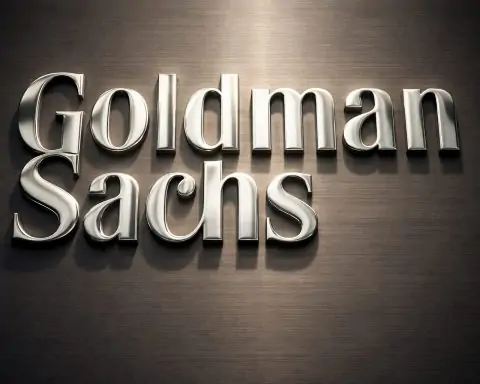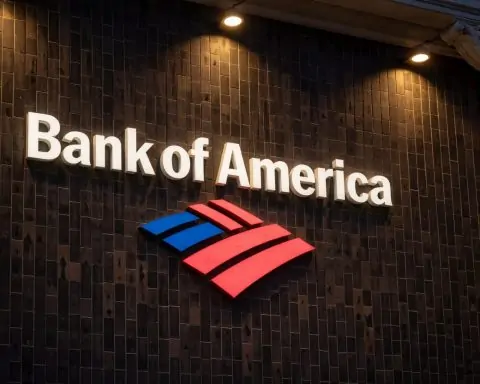- Pardoned: On Oct. 23, 2025 President Donald Trump issued a full pardon to Binance founder Changpeng “CZ” Zhao [1]. The White House noted that Zhao had already pled guilty in 2023 to a Bank Secrecy Act (anti-money laundering) violation, paid roughly $4.3 billion to settle the U.S. Justice Dept. probe, and served a four-month sentence [2]. Trump’s press secretary Karoline Leavitt framed the pardon as reversing a “war on cryptocurrency” under the prior administration [3].
- CZ’s Status: Zhao remains Binance’s largest shareholder but resigned as CEO last year under the plea deal [4]. It’s unclear if he will return to an active role at Binance [5]. In a statement, Zhao emphasized that there were no fraud charges in his case – he “pleaded to a single violation of [the] Banking Secrecy Act” [6]. Many in Trump’s circle view the case against Zhao as politically motivated and “weak,” and say the pardon could “set the stage for CZ’s return to the crypto exchange.” [7]
- Crypto Market Context: Crypto prices have been surging. Bitcoin hit a new all-time high (~$125,245) on Oct. 5, 2025 [8] (up nearly 11% in a week) before pulling back. As of Oct. 23, BTC was around $110–111K [9] (up ~19% YTD). Ethereum topped $4,800 in early October [10]. The broader crypto rally – fueled by institutional inflows, ETF hype and even a U.S. government shutdown – has lifted many tokens. Major altcoins and crypto stocks (like miners and exchanges) jumped alongside Bitcoin. For example, Coinbase (NASDAQ: COIN) stock is trading near $319 [11], and two Winklevoss-led crypto IPOs (Bullish, Gemini) also stand at about $53 and $19 respectively [12]. (Markets are volatile – a mid-October U.S.–China tariff shock briefly wiped out most October gains.)
- Regulatory Shift: The pardon caps a pro-crypto shift under the Trump administration. President Trump has repeatedly branded himself a “crypto president” – Changpeng Zhao even hailed him as such [13]. The SEC has dropped major crypto cases: in May 2025 it voluntarily dismissed the SEC’s 2023 lawsuit against Binance (calling dismissal “appropriate… in the exercise of [its] discretion” [14]), and earlier withdrew a Coinbase suit [15]. Coinbase applauded the regulatory thaw, noting the SEC chair under Trump has emphasized rules over prosecutions [16]. Meanwhile, Congress this year passed landmark crypto laws – the GENIUS Act for stablecoins and the CLARITY Act for digital assets [17] – establishing clear federal frameworks. One industry lobbyist cheered: “At last, a framework” to spur hesitant institutional investment [18]. Many analysts say this regulatory clarity is a game-changer. As one equity strategist noted, “Regulatory overhang has been a real drag – now it’s lifting, and that’s huge.” [19]
Trump’s Binance Pardon and Its Implications
On Oct. 23, Trump used his pardon power to free CZ Zhao, the once-powerful CEO of Binance, the world’s largest crypto exchange [20]. Zhao’s 2023 guilty plea stemmed from lapses in Binance’s anti-money-laundering controls; he was fined ~$4.3 billion and briefly jailed [21]. The White House statement highlighted that Zhao was prosecuted under the Biden administration’s “war on cryptocurrency,” framing the pardon as correcting a political crusade [22]. Zhao himself thanked Trump and clarified that no fraud charges were ever filed, saying “I pleaded to a single violation of [the] Banking Secrecy Act” [23].
Crypto insiders immediately noted the pardon’s high-profile nature. Fox Business reports that some Trump advisers believe the fraud case against CZ was weak and that a pardon could allow him to rejoin Binance [24]. Indeed, Reuters notes the pardon “paves the way for the crypto mogul to return to the business he helped found” [25]. However, Binance has not indicated any immediate comeback plan. The exchange issued no comment; Zhao remains a major owner of Binance [26], but it is unclear what role he will take. The pardon follows a string of Trump clemencies for tech and crypto figures (including BitMEX founders earlier in 2025) and reinforces Trump’s image as a crypto-friendly executive [27] [28].
Crypto Market Reaction and Outlook
News of the pardon came amid a blistering crypto rally. Bitcoin’s surge was already stoked by macro factors: a weak dollar, U.S. political uncertainty (Fed shutdown fears), and unprecedented inflows into spot Bitcoin ETFs [29]. In early October BTC hit $125,245, its highest ever [30], and briefly flirted with $126K [31]. Altcoins followed suit – Ethereum climbed above $4,800 (its highest in ~18 months) and many smaller tokens rallied. Crypto market cap swelled, lifting exchange and miner stocks. For example, Coinbase saw its stock more than triple from last year’s lows – analysts note COIN is within ~25% of its all-time high [32].
The immediate effect of Oct. 23 news is mixed. Crypto prices don’t react like equities to a single event, but sentiment remains upbeat. Many traders view Trump’s move as part of broader tailwinds. Standard Chartered analysts, for instance, still forecast Bitcoin reaching $200,000 by end-2025 [33] (earlier projecting ~$135,000 in the short term [34]). Veteran crypto strategist Arthur Hayes (ex-BitMEX CEO) called the mid-October pullback a “buying window” for a potential year-end rally [35]. Others note that the macro setup (election uncertainty, Fed pause) could keep BTC elevated – one analyst even quipped “It’s still woefully under-allocated in portfolios” [36].
Cryptocurrency-related stocks are likewise projected to benefit from any continued bull cycle. On Oct. 23 Coinbase traded near $319 [37]. Bullish Crypto (BLSH) was ~$53 and Gemini (GEMI) ~$19 [38]. Bernstein analyst Gautam Chhugani recently reiterated an “Outperform” on COIN with a $510 price target [39], arguing the market underestimates Coinbase’s growth in crypto services. (Oppenheimer, Benchmark and others have targets in the $400s [40]; even Goldman Sachs lifted its neutral target to ~$363 after seeing strength [41].) If Bitcoin and crypto volumes surge as expected, Coinbase could reap big gains in trading fees. Similarly, as blockchain data sites gain importance under clear rules, Binance-affiliated properties (like CoinMarketCap) and other crypto platforms look more valuable.
Policy Shift: From Lawsuits to Laws
Trump’s pardon is emblematic of a wider shift: U.S. policy has swung from enforcement to engagement. Within months of Trump’s return, regulators pulled back on high-profile cases. In May 2025 the SEC voluntarily dismissed its lawsuit accusing Binance of market manipulation [42], acknowledging that strict enforcement was giving way to regulatory clarity. Binance hailed that dismissal as “a landmark moment,” thanking the Trump SEC chair and calling for innovation-friendly policy [43]. Likewise, the SEC dropped a lawsuit against Coinbase in early 2025 [44].
At the same time, Congress moved to legislate. In 2025 lawmakers passed the first federal crypto rules – e.g. the GENIUS Act (stablecoins oversight) and CLARITY Act (defining digital assets, staking) [45]. These measures aim to establish clear “rules of the road” after years of uncertainty. One crypto lobbyist cheered, “At last, a framework,” saying transparent rules should unlock institutional crypto flows [46]. President Trump himself has publicly embraced this stance – he’s advocated making America “the global center of cryptocurrency” and positioned himself as the pro-blockchain candidate [47].
The combined effect – deregulation plus lawmaking – has given many investors confidence. A US equities analyst summed it up: “Regulatory overhang has been a real drag – now it’s lifting, and that’s huge.” [48] This improved climate coincides with mega inflows: for example, Bitcoin ETFs now hold over 1.5 million BTC [49]. Traditional finance players, from Morgan Stanley (recommending 2–4% crypto allocations [50]) to wealth managers, are increasingly on board.
Outlook and Analysis
With Trump’s pardon, CZ’s saga may be near an end – or a new beginning. If Zhao returns to Binance, some foresee a boom in product development or global expansion (Binance has already been shifting its base “remote-first” and hiring in Singapore and beyond). Even if he stays on the sidelines, the pardon removes a cloud over Binance’s brand.
More broadly, analysts see further upside for crypto under these conditions. Standard Chartered (for example) notes that Bitcoin’s rally has been driven by U.S. fiscal and liquidity fears, and forecasts continued gains even amid volatility [51]. Crypto market-watchers on platforms like CoinDesk and Bloomberg also highlight that with Bitcoin up ~120% in 2025 so far [52], the historical trend (“Uptober”) still favors further strength.
In equities, crypto-linked names have rebounded sharply. Coinbase’s Q3 earnings (due Oct. 30) are expected to show strong volume-driven revenue [53]. Under a bullish scenario (Bitcoin to $200K, continued ETF inflows), Coinbase’s revenue and stock could surge. Bernstein’s bullish call sees COIN doubling to ~$500 in 12–18 months [54]. Even cautious firms like Goldman and JPMorgan have warmed to Coinbase as the premier regulated crypto exchange.
Still, experts caution that markets will remain choppy. Crypto’s high beta means policy news (trade wars, regulation, etc.) can cause big swings – as seen on Oct. 10 when U.S.–China tariff talk briefly sent BTC below $105K [55] [56]. But many now interpret such dips as buying opportunities. Long-time traders note that crypto’s fundamentals are stronger (institutional “HODLing”, ETFs, cleared payment rails) and that a favorable political climate reduces the odds of sudden bans or crackdowns.
In summary, Trump’s pardon of CZ has galvanized the crypto community and underscored a broader trend: the digital-asset industry is entering its most mainstream era yet. As one analyst put it, crypto is no longer just “a shadow finance story” – it’s entwined with geopolitics, dollars, and mainstream markets. With aggressive price targets from major banks and an election cycle ahead, both bullish forecasts (Bitcoin to $200K+, Coinbase >> $400) and short-term caution make headlines. For now, experts say, the long-term case for crypto remains intact, while volatility is the rule.
Sources: U.S. and crypto news outlets [57] [58] [59] [60] [61] [62]; industry analysis [63] [64] [65] [66]; market price data [67] [68].
References
1. www.straitstimes.com, 2. www.straitstimes.com, 3. www.straitstimes.com, 4. www.straitstimes.com, 5. www.foxbusiness.com, 6. www.foxbusiness.com, 7. cryptonews.com, 8. www.reuters.com, 9. www.foxbusiness.com, 10. ts2.tech, 11. www.foxbusiness.com, 12. www.foxbusiness.com, 13. ts2.tech, 14. www.straitstimes.com, 15. www.straitstimes.com, 16. www.straitstimes.com, 17. ts2.tech, 18. ts2.tech, 19. ts2.tech, 20. www.straitstimes.com, 21. www.straitstimes.com, 22. www.straitstimes.com, 23. www.foxbusiness.com, 24. cryptonews.com, 25. www.straitstimes.com, 26. www.foxbusiness.com, 27. www.straitstimes.com, 28. www.straitstimes.com, 29. ts2.tech, 30. www.reuters.com, 31. www.foxbusiness.com, 32. ts2.tech, 33. ts2.tech, 34. ts2.tech, 35. ts2.tech, 36. ts2.tech, 37. www.foxbusiness.com, 38. www.foxbusiness.com, 39. ts2.tech, 40. ts2.tech, 41. ts2.tech, 42. www.straitstimes.com, 43. www.straitstimes.com, 44. www.straitstimes.com, 45. ts2.tech, 46. ts2.tech, 47. ts2.tech, 48. ts2.tech, 49. ts2.tech, 50. ts2.tech, 51. ts2.tech, 52. ts2.tech, 53. ts2.tech, 54. ts2.tech, 55. ts2.tech, 56. ts2.tech, 57. www.straitstimes.com, 58. cryptonews.com, 59. www.foxbusiness.com, 60. www.reuters.com, 61. www.straitstimes.com, 62. ts2.tech, 63. ts2.tech, 64. ts2.tech, 65. ts2.tech, 66. ts2.tech, 67. www.foxbusiness.com, 68. www.foxbusiness.com







